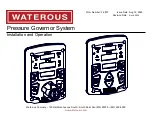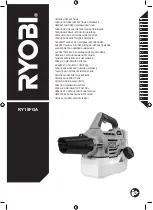
5
Allgemeines
General information
Standard-Koagulation
Bei der Standard-Koagulation wird die
Generatorspannung so gering gehalten, dass es
während des Koagulationsvorgangs zu keiner
Lichtbogenbildung zwischen Elektrode und
Gewebe kommen kann. Die Standard-
Koagulation ist für alle Koagulationen empfeh-
lenswert, bei denen monopolare oder bipolare
Koagulationselektroden verwendet werden, die
direkt mit dem zu koagulierenden Gewebe in
Kontakt gebracht werden. Die Standard-
Koagulation ermöglicht tiefe Koagulationen,
wobei eine Karbonisation des Gewebes vermie-
den wird.
Forcierte Koagulation
Bei der Forcierten Koagulation werden elektri-
sche Lichtbogen zwischen Koagulations-
elektrode und Gewebe bewußt zugelassen, um
oberflächlich verschorfte, jedoch in die Tiefe rei-
chende Koagulationen zu ermöglichen. Dies gilt
insbesondere dann, wenn für die Koagulation
nur kleinflächige Elektroden zur Verfügung ste-
hen. Um die Gefahr eines Schneideeffektes zu
vermeiden muss eine modulierte HF-Spannung
verwendet werden. Eine Verschorfung des
Gewebes muss hierbei allerdings in Kauf
genommen werden.
Ein typisches Anwendungsbeispiel ist die TUR,
bei der die Schneideelektroden auch zu
Koagulationszwecken verwendet werden.
Spray-Koagulation
Werden hohe Spannungspulse zur Koagulation
verwendet, entstehen zwischen Elektrode und
Gewebe derart lange Lichtbogen, dass eine
Berührung des Gewebes mit der Elektrode nicht
mehr nötig ist. Die Spray-Koagulation wird vor
allem bei der Oberflächenkoagulation oder bei
der Blutstillung von Gefäßen verwendet, die mit
einer Koagulationselektrode nicht direkt erreich-
bar sind (beispielsweise im Knochenspalt).
Standard coagulation
With standard coagulation, the generator voltage
is kept so low that no arcing is able to take place
between the electrode and tissue during the
coagulation process. Standard coagulation is
recommended for all instances of coagulation in
which monopolar or bipolar coagulation elec-
trodes are used which are brought into direct
contact with the tissue that is to be coagulated.
Standard coagulation provides for deep coagu-
lation while avoiding carbonization of the tissue.
Forced coagulation
With forced coagulation, electric arcs are inten-
tionally permitted between the coagulation elec-
trode and tissue to enable the formation of sur-
face sloughing with nevertheless deep-reaching
coagulation. This particularly applies if only
small-face electrodes are available for coagula-
tion. To avoid the risk of a cutting effect, a modu-
lated HF voltage must be used. Tissue sloughing
will, however, occur.
A typical application is TUR, in which the cutting
electrodes are also used for coagulation purpos-
es.
Spray coagulation
If sufficiently high voltage pulses are used for
coagulation, arcs occur between the electrode
and tissue of such a length that contact between
the tissue and the electrode is no longer neces-
sary. Spray coagulation is primarily used for sur-
face coagulation or for hemostasis of vessels
which cannot be directly reached with a coagu-
lation electrode (e.g. in bone fissures).
Generalidades
Coagulación estándar
En la coagulación estándar se mantiene la ten-
sión de generador tan reducida, que no se
puede producir ninguna formación de arco vol-
taico entre electrodo y tejido durante el proceso
de coagulación. La coagulación estándar es
recomendable para todas las coagulaciones en
las que se utilicen electrodos monopolares o
bipolares y que se pongan en contacto directo
con el tejido a coagular. La coagulación están-
dar posibilita coagulaciones profundas, sin que
se produzca una carbonización del tejido.
Coagulación forzada
En la coagulación forzada se toleran arcos vol-
taicos eléctricos entre electrodo de coagulación
y tejido, para posibilitar coagulaciones superfi-
cialmente escarificadas, pero sin embargo pro-
fundas. Ello es válido en especial cuando sólo
se disponga para la coagulación de electrodos
de superficie pequeña. Para evitar el peligro de
un efecto de corte se debe utilizar una tensión
de AF modulada, pero no se puede evitar la
escarificación del tejido.
Un ejemplo típico de utilización es la RTU
(resección transuretral), en la que los electrodos
de corte se utilizan también para la coagulación.
Coagulación spray
Si se utilizan pulsos de tensión altos para la coa-
gulación, se crean entre electrodo y tejido arcos
voltaicos tan largos que ya no es necesario que
el electrodo toque el tejido. La coagulación
spray se utiliza sobre todo en la coagulación de
superficie o en la hemostasis vascular, que no
son directamente accesibles con un electrodo
de coagulación (por ejemplo, en fractura lineal).
Summary of Contents for 205352 20-1
Page 8: ......
Page 9: ...AUTOCON II 400 AUTOCON II 400 AUTOCON II 400 20 5352 20 11x 20 5352 20 11x 20 5352 20 11x ...
Page 10: ......
Page 13: ...III Geräteabbildungen Photographs of the equipment Imágenes del equipo ...
Page 14: ...IV W R Q Geräteabbildungen Photographs of the equipment Imágenes del equipo I O Y U T E ...
Page 146: ......
Page 152: ......
Page 156: ......
Page 158: ......
Page 172: ......
Page 186: ...Figure 4 11 Figure 4 12 Figure 4 13 4 14 12 06 V1 0 AUTOCON II 400 MODEL 205352 20 1 ...
Page 192: ......
Page 198: ......
Page 200: ......
Page 202: ......
Page 203: ......
















































